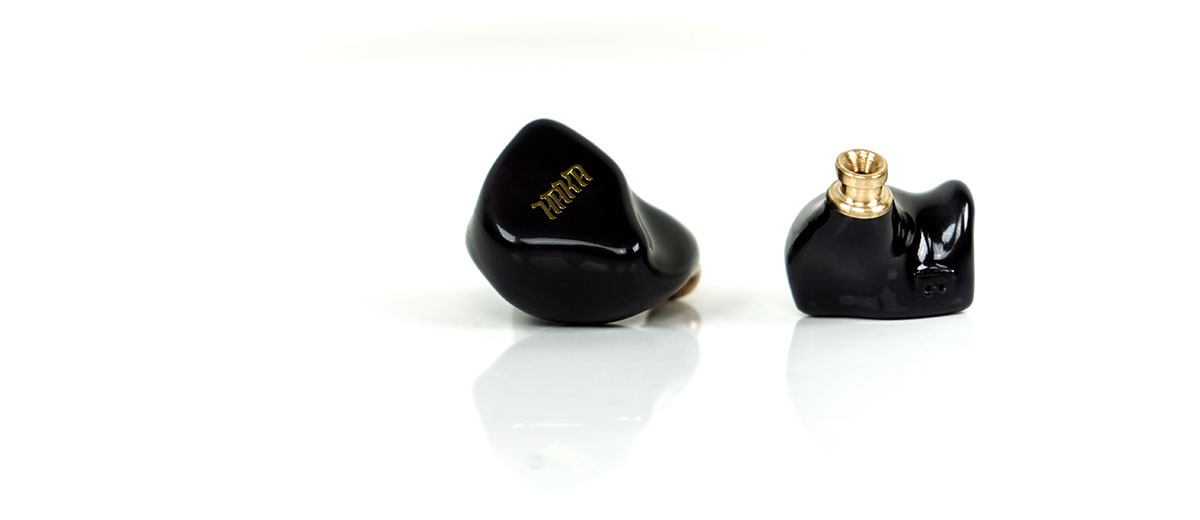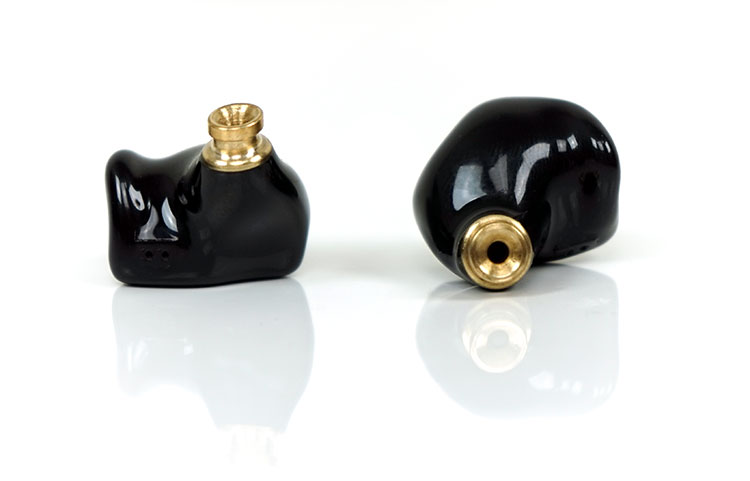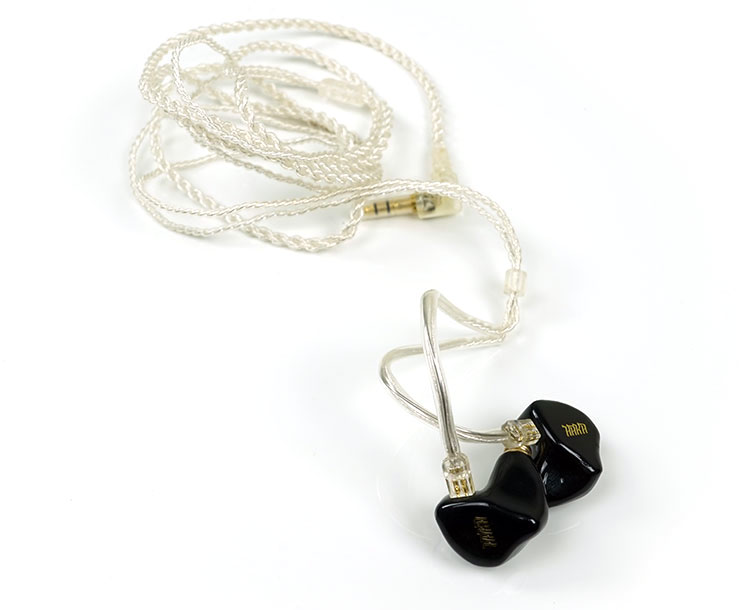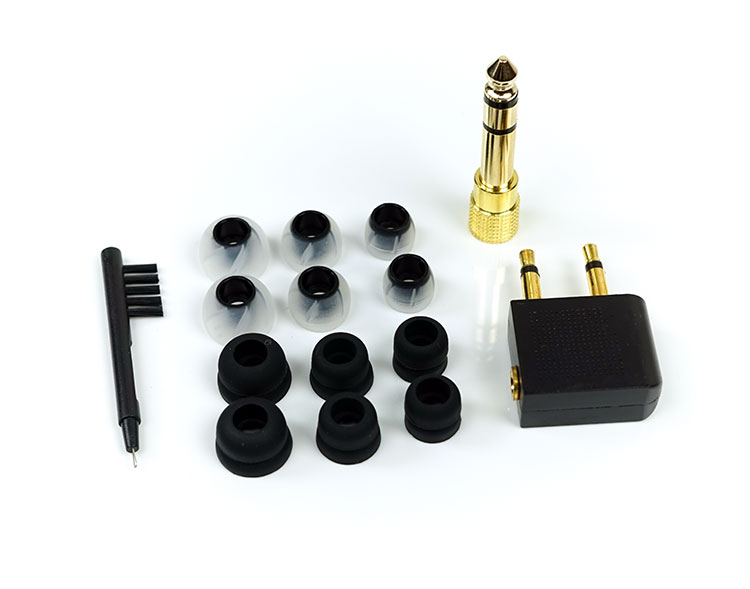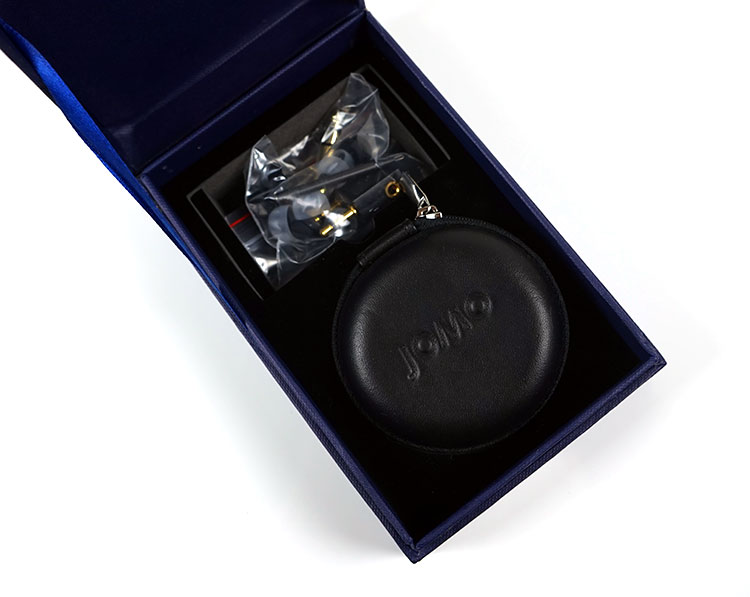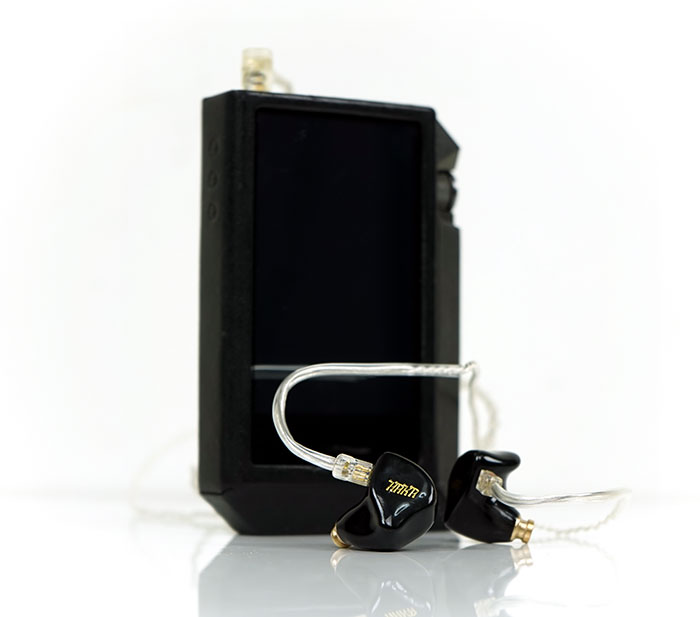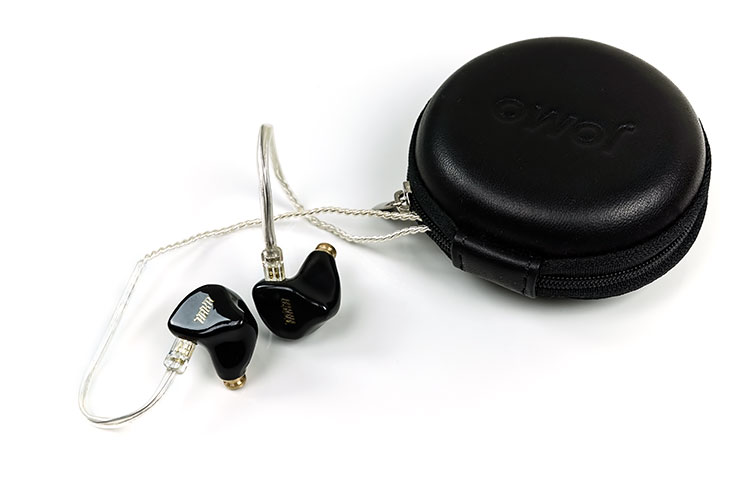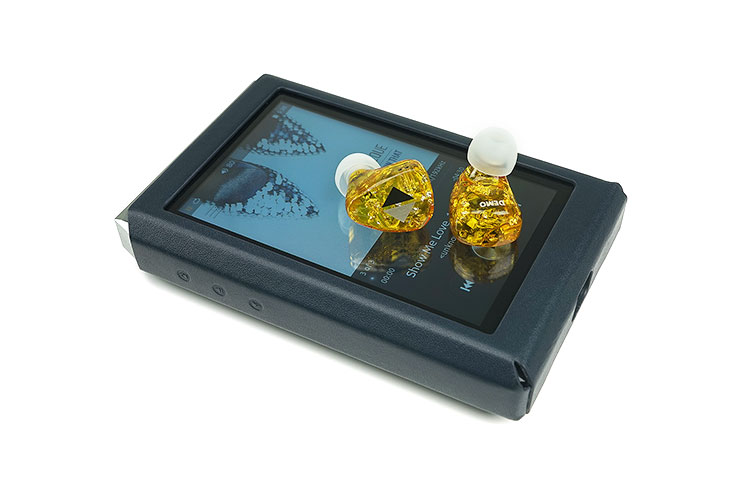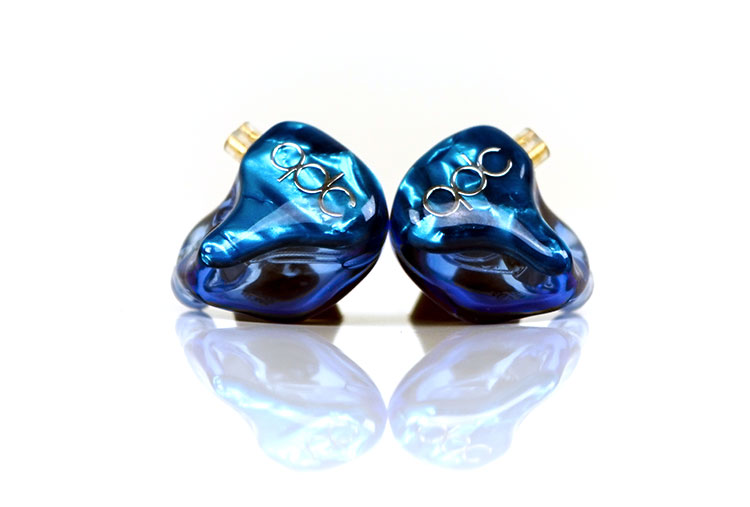The Jomo Audio Haka is the company’s new entry-level single balanced armature driver IEM priced at SG$499 or around $380.
Disclaimer: The Jomo Audio Haka sent to us is a sample in exchange for our honest opinion. We thank the team at Jomo Audio for giving us this opportunity.
To read more about Jomo Audio products we reviewed on Headfonics click here.
Note, this review follows our new scoring guidelines for 2020 which you can read up on here.
So what is a Haka? The ‘Haka’ is a traditional war dance or challenge in Maori culture.
You will most likely have seen it on TV if you are a Rugby Union fan with the New Zealand All-Blacks infamous pre-match Haka routine designed to deliver fear into the hearts of their opponents. Only ever works on the Poms though, but I digress.
In this case, a Haka is Singapore-based Jomo Audio’s latest universal IEM and its cheapest to date at SG$499. This is a single balanced armature driver design. However, it ignores a lot of perceived norms in terms of stock BA designs.
Jomo Audio believes that by leaving out a lot of these norms and bringing in their own specifications they have managed to break out of the traditional limitations of single BA performances.
What Is The Pitch?
Current Single BA Thinking
To date, BA driver design often works best when they target particular ranges of frequencies rather than the entire spectrum. Hence the use of multiple-driver BA designs to produce a performance that covers the entire range. However, a lot of people enjoy single BA designs because they are perceived as being more coherent with less crossover technology.
Too Much technology?
Jomo Audio believe that today’s single balanced armature IEMs in the marketplace are just too meek with only a moderate extension on either end of the frequency spectrum.
They argue that the majority of single BA drivers rely too much on crossover technology and acoustic dampening to get that full frequency spectrum performance.
No Crossover
The pitch of the Haka is different. There is no crossover technology inside. Rather, this is a proprietary single balanced armature driver that Jomo Audio has commissioned with their own specification in mind to deliver a full-range performance without resorting to traditional technology.
Build
Form Factor
The Haka is a fairly small contoured 3D-printed IEM not unlike the IT03 and IT01 from iBasso. The overall size is a little bit smaller than the PLB and roughly the same size as the YK1 from Aya Audio. It differentiates itself from both of those with its more aggressive contouring which produces a really unique, almost CIEM like, design.
In fact, I actually prefer the form factor of the Haka over Jomo Audio’s more expensive PLB triple BA IEM due to its superior lower shell contouring. The Haka has that little dip in the lower shell that rides the concha ridge in your ear and in doing relieves a little bit of pressure that can build up with other IEMs that lack that dip. It also produces a superior seal. The PLB does not have that little dip and is more rigid in its lines. As good as a seal and fit the PLB is, the Haka is better.
Materials & Finish
Given the use of the Haka name, it is unsurprising that it comes in one color, black. The only deviation from black is in the gold colored finish of the Haka moniker on the front face plate and the brass nozzle.
The main body is composed of a 2-piece hard acrylic shell, not unlike the custom designs Jomo use for their high-end designs. The single-bore brass nozzle is distinct from the body rather than an extension of the lower shell. this is quite different to the PLB all acrylic lower-shell design. The brass finish on the Haka nozzle is excellent with a strong lip contour so tips are unlikely to fall off.
Cable
The Haka is terminated with a top-shell non -recessed 0.78mm 2-pin connector port so the cable is designed to be worn over the ear. Thankfully, the port is not too tight so the 2-pin connectors on the cable slide in and out with just the right amount of resistance. There is no wiggling or wedging required to detach the cable from the IEMs.
The cable itself is a tightly braided 1.2m SPC 4-core wire wrapped in a PET jacket. You will find transparent heat-shrunk memory tubes on the end of both connectors. They are a little thick but they have great memory retention for shaping around most ears.
The jack is a 3.5mm unbalanced stereo jack finished at a right angle with a sold stress relief finish. The same stiffened rubber finish of the jack is used for the y-splitter and adjustable chin strap. You also get a nice little silicone jack for the 3.5mm jack tip, something I am seeing happening from cable makers more and more. It is a nice touch.
The microphonics is also very low also and it does behave itself rather well with little or no memory retention. I can’t confirm if this is a Plastics One cable but on a physical level, this is one of the better ones.
Comfort
The Haka nozzle is deceptively quite long. The brass part is not that long but the curved finish fo the acrylic shell does extend a bit which pushed the brass nozzle further forward. As a result, the nozzle will give you a fairly deep penetration with one of the selected tips, especially the supplied dual flange tips.
The comfort is excellent. As mentioned the dipped contour on the underside wraps really nicely around the concha ridge minimizing any undue pressure on the outer ear from the Haka body. This also allows the nozzle to creep in a little further.
Seal
The Haka sits rock solid in your ear with all the supplied tips. The silicone single bore Tennmak Whirlwind tips have the least amount of seal. If you want the best seal for the Haka then use the supplied double flange tips which improve the background isolation greatly.
Surprisingly, no foam tips came with the Haka which would have created the best seal. I presume they were left out due to how they may affect the performance of the Haka. Personally, I found a generic set of foams to be fantastic with the Haka bringing it to a whole new level.
The double flange does soften the response a little compared to the Whirlwind tips and not my favored pairing. The Whirlwind tips have a wider bore which does deliver an airier cleaner sound without the loss of low-end impact. Compared to generic foams though it does come at the cost of some isolation.
Accessories & Packaging
As ever, Joseph and his team and put in a considerable amount of time producing a really professional look and feel to their retail package. Whilst not as feature-packed and striking as the PLB presentation it is nevertheless more than adequate for this price point and it does look very nice in its all-black retail wrapping.
Inside the box, everything is neatly arranged in a preset foam encased layout with a single slot for the accessories and another for its semi-stiffened leather zippered pill-case. Inside the pill-case, you will find the Haka and its cable. The included accessories are as follows:
- 1 x cleaning brush/tip
- 3 x single bore Tennmak Whirlwind tips (s/m/l)
- 3 x dual flange silicone tips (s/m/l)
- 1 x quarter jack adapter
- Airplane adapter
- Leather semi-stiffened carry case
The only missing accessories I would have loved to have seen was a set of foams in medium and large size for those that want a little more isolation. Other than that the Haka package has everything you need to get up and running.
Sound Impressions
Tonality & Presentation
The Haka is perhaps one of the most tip dependent IEMs I have reviewed in recent memory. I believe you can also have a custom version done on the Haka which may give an even different sound signature. I will get into this a bit more further down.
There is a core presentation though, one that is very mildly u-shaped and quite unique for a typical single BA design. I say unique because generally speaking the majority of single BA’s either deliver a very flat presentation or mid-centric n-shape with vocals to the fore.
The Haka does indeed have a very nice level of elevation from 2-3k for vocal presence but it also has a gentle uptick in its lower treble from 5-7k before it drops away until around 10k.
It is also unusual for a single BA in that its low-end is not pushed up into the mid-to-upper bass in terms of warmth and energy. Jomo Audio has managed to deliver a fairly even if slightly stronger sub-bass presence to the Haka that gives it some decent power from 40-70Hz. There is some warmth in the presentation for sure but it is not the be-all and end all and does not roll-off like I expected it might.
As a result, the Haka delivers an engaging, slightly musical but very natural tonality with better than expected depth to its soundstage and excellent width. A slight drop and dip into the mids from 500Hz to 1k also helps push the vocals out a bit and give them a bit more presence. Something I tend to expect from a good single BA design.
The drop post 7k though will not deliver a huge extension but it’s neither dry nor shelved down, instead relying on the lower treble up to 7k to add some necessary sparkle and harmonic balance.
Bass
There is a mild elevation in the Haka but its starting point is much lower down than some competing IEMs so it is not all mid-bass and not much else. That is not to say this is sub-bass Warhammer, it is still fundamentally a BA low-end meaning reasonably polite but quick-paced. rather it just does not roll off prematurely or slides away below 100Hz.
The Haka’s bass does dip to 1k but it is slow, gentle, and quite linear. It is the kind of subtle drop I find to gel well with my own personal preferences. There is just enough body and warmth but not too much so lower-pitched instrumental timbre will sound natural rather than bloated.
Mids
From 500hz to 2K the Haka has a gentle dip and plateau before it gets elevated and more energy into the upper mids from 2-3k. This is a fairly linear delivery with a little warmth pulled from the dropping low-end into the instrumental timbre.
Instrumental positioning is just a little behind higher-pitched vocals creating a perceptible element of space and allowing for the vocals to take center stage when required. More so for female or higher-pitched vocals than male or lower-pitched. Any lower-key vocals remaining steady around 500Hz will compete a bit more with instruments and will be perceived as sitting further back a bit more.
The pronounced 2-3k elevation precedes a little minor dip in the mids around 4k that takes the edge of some percussion but not so much that they sound overly rounded in their attack. There is enough bite but nothing remotely edgy.
Treble
Any sparkle and energy in the treble of the Haka will be found in and around 5-7k. Nothing peaky at all about this and like the upper mids its just enough to give some nice contrast and deliver a good harmonic balance.
The emphasis here is to prevent the Haka from sounding rolled-off though it doesn’t have any dramatic final octave energy. The net effect is quite a smooth, yet a perceptibly articulate treble response with a reasonable level of headroom and air.
Tip
So let’s talk tips again because it took me a while to figure out the “true sound” of the Haka from all the tip variations. The absolute best experience was with a pair of generic foam tips. You can use Comply if you wish though personally, I found no difference between them and the generic types.
3rd Party Foam Tips
Using foam tips I actually didn’t feel anything got overly smoothed over. Nor did I experience or a loss of top-end extension and sparkle which is a common foam complaint. What I did get was a better seal and that did help beef up the low-end with less leakage and background noise interference than the silicone tips.
Stock Whirlwind Tips
The Whirlwind tips will deliver more sparkle and energy in the top end than the foams but I never found the end result to be aggressive or tizzy. The Haka still manages to retain a healthy and natural sound with just slightly less body than the foams. You do lose a little low-end weight with these tips but not a huge amount. I always found these Whirlwind tips to be solid bass performers despite their wide bore design.
Dual Flange Tips
The dual flange tips sat somewhere in-between the Whirlwinds and the foam tips. It has a warmer sound than silicone tips but with slightly less bass impact. They do seal better than the whirlwind tips but well behind generic foam tips.
Matchability
Efficiency
The Haka is rated at 18Ω and 107dB which is pretty good actually for weaker sources and amp signals. In real-world testing, I actually found it needed a little more juice than some multi-BA designs but more efficient than a lot of its competitors.
On the HiBy Music R3, for instance, it ran about 20 digital steps higher than the Andromeda 5-BA in low gain and up to 72 digital steps on the Sony W1z in low-gain. Neither displayed any noise or background hiss with the Haka which I rate as pretty good overall with most sources.
Comparing to other single BA driver designed IEMs this should not really be a surprise. I have found quite a lot of single BA driver IEMs to need just a little more juice. The Aya Audio YK 1 is rated at a moderate 24Ω and 102dB. It is significantly less efficient than the Haka and needs loads more gain than the Andromeda.
The Soranik SK1 does seem a little more efficient on paper at 24Ω and 109dB. However, given the usual margin of error with these measurements, you will not find much difference between the two in real-world tests.
The one that stood out as more efficient was the QDC Neptune. This single-BA is just 10Ω but less sensitive on paper than the Haka at 104dB. However, the Neptune will go louder earlier than the Haka of the two tested sources in low-gain.
In summary, the Haka is easier to drive than a quite a few single BA IEMs, but in itself, it is not a highly sensitive IEM.
Select Comparisons
Aya Audio Nightingale YK1
$250
Technical
The Nightingale YK1 from Vietnamese specialists, Aya Audio is a single BA IEM rated at 24Ω and 102dB. Compared to the Haka it requires a little more power and volume on most digital media players and I do prefer its signature from a better source or amp signal than current smartphones such as the V20 or the LG G6. Both
Performance
Tonally the YK1 is more of a traditional single BA N-shape with more mid-range emphasis, slightly more treble emphasis and sparkle but significantly less low-end weight and body.
The YK1 opts instead for a full-sounding mid-bass emphasis but compared to the Haka it is not as impactful or as extended. The Yk1 does fall off a bit more below 100Hz compared to the Haka. The Haka thus can generate a bit more power and better fundamentals than the YK1 whereas the YK1 will push the vocal presence a little further forward and add a touch more extension and sparkle at the top end.
Soranik SK1
$450
Technical
The SK1 is also a single BA driver IEM built by Soranik who are close to stablemates Aya Audio in Vietnam. This is a chunkier looking IEM and originally with more of a custom look and feel. Their subsequent production models have refined the process so the newer ones are a bit more universal looking and smaller.
The SK1 is rated at 20 ohms and 109dB so there is not much difference in terms of volume and power requirements between it and the Haka. Noise control is quite good also and if you want to portable amp then I recommend both with the ALO Audio Rx solid-state amp which really does great things with a dynamic range on both IEMs.
Performance
Tonally the SK1 is not too far from the Aya Audio sound though it has a bit more vocal emphasis, a slightly richer midrange, and less top-end extension.
Compared to the Haka it has less body though its instrumental timbre is also quite natural sounding. It also rolls off a bit more beyond 100Hz so it has less weight and texture in its sub-bass presence and not as impactful sounding.
Vocals are much more to the fore on the SK1 than the Haka with quite a significant but attractive sounding elevation around 2-3k. The Haka also has a bump in the same region but it is a bit milder and not as forward sounding. The SK1 vocal performance is truly special to me and one of the big selling points of this IEM. It’s smooth, rich-sounding, and very refined in its delivery.
There is more treble extension and energy on the Haka compared to the SK1 which falls away a bit more from 3k onwards with only a slight pause around 5-6k. The Haka keeps the energy levels higher to 7k delivering a bit more headroom and air as a result.
QDC Neptune
$240 (approx)
Technical
The QDC Neptune is our final single BA IEM for comparison and we will have a review out very soon for this one. Out of the 3 tested it has the most striking of designs with a shimmering blue finish and a very small form factor.
It is rated at 10Ω and 104db however, it is much easier to drive than the Hakka and you will not need as much volume or power on most DAPs tested. Noise floor detection is good though the Haka is a touch better for hiss control.
Performance
The Neptune follows a similar path to the YK and SK1 with a midrange n-shaped focus, a forward but smooth sounding vocal presence and roll-off a little more than the Haka at both ends.
The Haka has more of a lower mid to midrange dip and better sub-bass presence. The Neptune draws a bit of warmth from a slightly elevated mid-bass presence so it is not the more neutral of presentations though not as impactful as the Haka.
Both have a forward vocal presence, however, the Neptune seems more elevated and more intimate in its delivery. The Haka vocal presence is marginally further back so it is not quite as intimate sounding. It also sounds a little more spacious than the Neptune with better instrumental positioning just behind vocals.
The Neptune’s lower treble does seem to have a little more energy and generally speaking the Haka will sound a little darker than the Neptune.
Our Verdict
I quite like how Jomo Audio has tuned the Haka. It bucks the N-shaped or mid-focused tren of single BA IEMs without ever sounding unbalanced. It is one of the few single driver designs that actually has a good low-end extension with less focus on pushing mid-bass warmth. As such it is more aggressive and impactful than some of its competitors.
Is it darker sounding? Maybe a little but it is only when you compare it to the likes of the QDC Neptune do you get that feeling. Otherwise, this is a seriously excellent single BA offering with a standout presentation.
Beyond the sound, it has an excellent design and wonderful fit courtesy of that excellent 3D-printed shell. I like the Whirlwind tips but I would swap the double flange for a set of foams. Foams seem to be the most engaging and produce the best seal. I would also suggest you try quite a lot of tips as the Haka really does seem to be tip dependent on its universal format and I am accounting for my own preferences.
Price-wise it does sit on the high-end of single BA designs but I do think the performance and the whole package matches the price point and it does offer something a bit more unique in today’s mid-fi IEM marketplace.
Haka Technical Specifications
- Single Proprietary Precision Balanced Armature Drivers
- No crossover
- 3D printed ergonomic semi-custom shell design
- FR: 20Hz – 20kHz
- Sensitivity: 107dB
- Impedance: 18 ohms @ 1K Hz
- Solid Brass Nozzle
- Artwork limited to black color only




